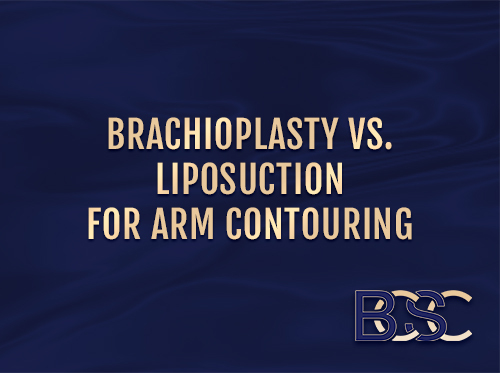Belt Lipectomy Surgery Guide
After weight loss, many people have ** skin. Excess skin can be removed by a qualified specialist general surgeon. If ** skin is present all the way the waistline (including the front, back and sides) then a belt lipectomy may be the right choice.
What is a Belt Lipectomy?
Losing a significant amount of weight can result in ** skin 360 degrees around the midsection. Once the fat padding is gone, flaccid skin tends to accumulate around the waistline. There may be ** on the abdomen, hips, sides, lower back, buttocks, and thighs. A belt lipectomy tightens skin on all these areas in one operation.
A belt lipectomy is a cosmetic surgery that removes loose skin 360 degrees around the abdomen, or “belt line”. The procedure is suitable for patients who have lost a massive amount of weight after bariatric surgery or extreme dieting. It is also called a “lower body lift” or a “circumferential abdominoplasty”. Usually a body contouring surgeon performs the surgery.
Some of the areas that a belt lipectomy can ** are the following:
- Abdomen
- Flanks
- Buttocks
- Outer thighs
- Inner thighs
- Mons pubis
- Abdominal muscle separation
Who is a Good Candidate for a Belt Lipectomy?
A belt lipectomy is not right for everyone. It is an extensive procedure that is usually reserved for patients with a significant amount of loose skin on the front, back, and sides of the abdomen. A qualified surgeon uses their expertise to determine which skin tightening procedure is suitable after weight loss.
The ideal belt lipectomy candidate:
- Has loose skin 360 degrees around their midsection after weight loss
- Finds the excess skin cosmetically displeasing
- Has reached a healthy weight or BMI
- Maintains a stable weight for at least six months
- Understands there will be a surgical scar
- Is mentally and physically ** enough to undergo cosmetic surgery
- Accepts that all surgery comes with risks
- Can take time off of work to recover
- Is a nonsmoker, or is willing to quit smoking before surgery
What are the Benefits of a Belt Lipectomy?
After weight loss, it should be a time to celebrate. However, for some people that’s not possible. Many people are troubled to see they have traded fat for ** skin after slimming down. Weight gain causes the skin to stretch. Fat pads the skin surface, so that stretched skin may not be obvious until a person loses weight.
Loose skin is unsightly. It’s hard to hide under clothes. When there is lax skin all the way around the abdomen, ** choices may be limited. Clothing may not fit properly due to the skin folds. Getting ready each day feels like an uphill battle. The thought of wearing a swimsuit, being intimate or even getting dressed in front of a partner may cause pangs of anxiety. All of this takes a toll on a person’s **.
Unfortunately, no amount of diet or exercise can tighten ** skin. The only way to correct significant skin ** is with a skin reduction procedure. A belt lipectomy is just one of many skin tightening procedures that are available to post-weight loss patients.
Like other cosmetic skin reduction procedures, the benefits go beyond looks. Some patients experience rashes, ulcers, chafing, excess perspiration, hygiene issues and infections due to skin folds. Removing the loose skin may alleviate these problems.
What Happens During the Surgery?
A belt lipectomy is a major operation. It is performed in a hospital under general anaesthesia. An overnight hospital stay is required. Most surgeons recommend staying several days to ensure a ** recovery.
The surgery takes three to six hours. As a 360-degree operation, the surgery starts with the patient lying face down on the table. The surgeon trims off excess skin on the posterior waistline and closes the incision. Then the patient is turned over. Excess skin on the frontal abdomen and sides is removed and sutured closed. Liposuction may also be performed to remove unwanted fat.
Recovery
A belt lipectomy is an extensive procedure. It ** multiple body parts at once. Therefore, the recovery time is significant. The exact recovery time varies from person to person. Most people need at least three weeks before they can resume work and light activities. A full recovery can take two months or longer.
Discomfort and swelling can be significant. Pain tends to peak in the first 72 hours and then gradually subside. Medications are prescribed to alleviate pain. Compression garments or an abdominal binder are worn for several weeks. This aids in skin retraction, takes tension off the incision, and reduces swelling. Swelling resolves a great deal in the first several weeks, but can persist for up to 12 months.
Strenuous activities are limited for up to eight weeks. It is helpful to have assistance at home. Shopping, childcare, and chores should be divided among family members so the patient can focus on healing. Exercise may resume when the surgeon gives clearance.
Walking is encouraged. Studies show walking lowers the risk of blood clots. Most patients can begin walking fully upright in two weeks. Until then, walking slowly and bent at the waist is acceptable.
It takes at least one year for the scars to fade. While redness may fade with time, the belt lipectomy scar is permanent.
Risks and Complications
When performed by a qualified surgeon in an accredited hospital, the procedure is considered ** for ** patients. However, all surgery comes with a degree of risk. Things can sometimes go wrong, even in the hands of the most experienced surgeon. In general, minor risks are more common than serious ones. Possible risks of a belt lipectomy include*:
- Nerve damage
- Uncontrolled bleeding
- Hematoma (bruising)
- Seroma (fluid buildup at the wound site, which may need to be drained)
- Wound breakdown or dehiscence
- Sutures spitting out
- Poor cosmetic result that requires a revision surgery
- Scar widening or keloid scars
- Bad reaction to anaesthesia
The best way to safeguard your health is to choose a highly qualified surgeon. Look for a surgeon that has appropriate credentials, medical schooling, fellowship training, licenses and affiliations with accredited hospital facilities. The more experience they have performing post-weight loss body contouring surgery, the better.
Avoid the temptation to travel abroad to developing or economically disadvantaged countries for cosmetic surgery. It is not worth the health risks.
*Other risks are possible.
Belt Lipectomy FAQ
Will there be a scar?
Yes. A belt lipectomy scar goes all the way around the waistline. Ideally, the scar is hidden so that it cannot be seen in clothes. It is not always possible to hide the scar 100%.
Does health insurance cover belt lipectomy surgery?
No. In Australia, like most other places, most patients pay out of pocket. A belt lipectomy is mainly done for cosmetic reasons. However, patients that meet certain criteria may be eligible for a Medicare rebate or have part of the hospital cost covered if they have high-level private cover. With the rebate, a portion of the total cost may be refunded. The Medicare inclusion criteria is strict, and most patients do not qualify.
How much does a belt lipectomy cost in Australia?
A belt lipectomy costs several thousand dollars. The price varies dramatically since the procedure is highly customized to each patient. Years of experience and geographic location may also affect pricing. Some surgeons accept financing plans, such as Care Credit, to make the cost more affordable.
Is a belt lipectomy **?
The procedure is considered ** for ** nonsmokers who have reached a stable body weight. Risks can be minimised by seeing a qualified surgeon in a developed nation. The surgery should take place in an accredited facility. Risks can still occur. Most belt lipectomy complications are minor or cosmetic, although some can be serious.
What is the difference between a belt lipectomy and a tummy tuck?
A tummy tuck only ** the front abdomen. A belt lipectomy tightens the entire waistline, including the abdomen, sides, posterior flanks, buttocks, mons pubis and, to a degree, the thighs. A belt lipectomy is like an extended tummy tuck, buttocks and lateral thigh lift in one. A qualified surgeon can help you decide if you need a tummy tuck, belt lipectomy or a different procedure.
Do I need liposuction or skin tightening?
It depends on the patient’s cosmetic goals. Liposuction gets rid of fat pockets that won’t respond to diet and exercise. Skin reduction procedures, such as a belt lipectomy, tighten loose skin. After weight loss, you may need both to get a slim, taut midsection. A belt lipectomy can be ** performed along with liposuction in one surgery.



